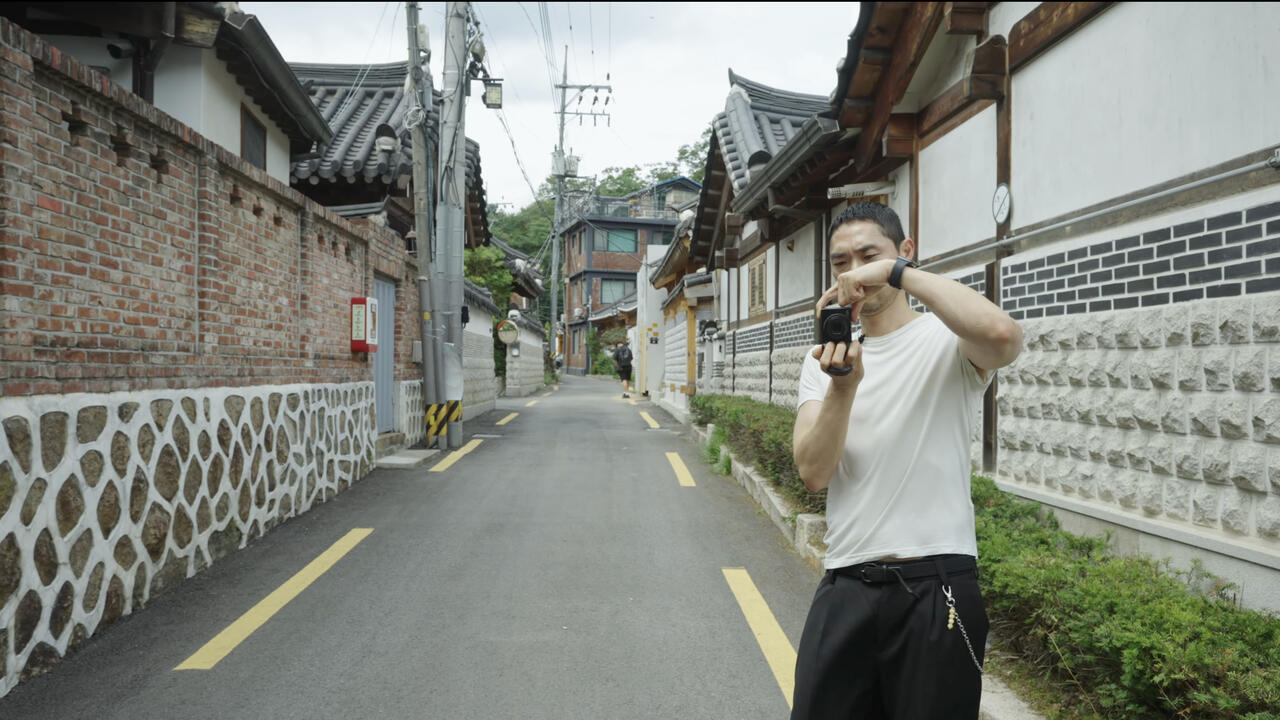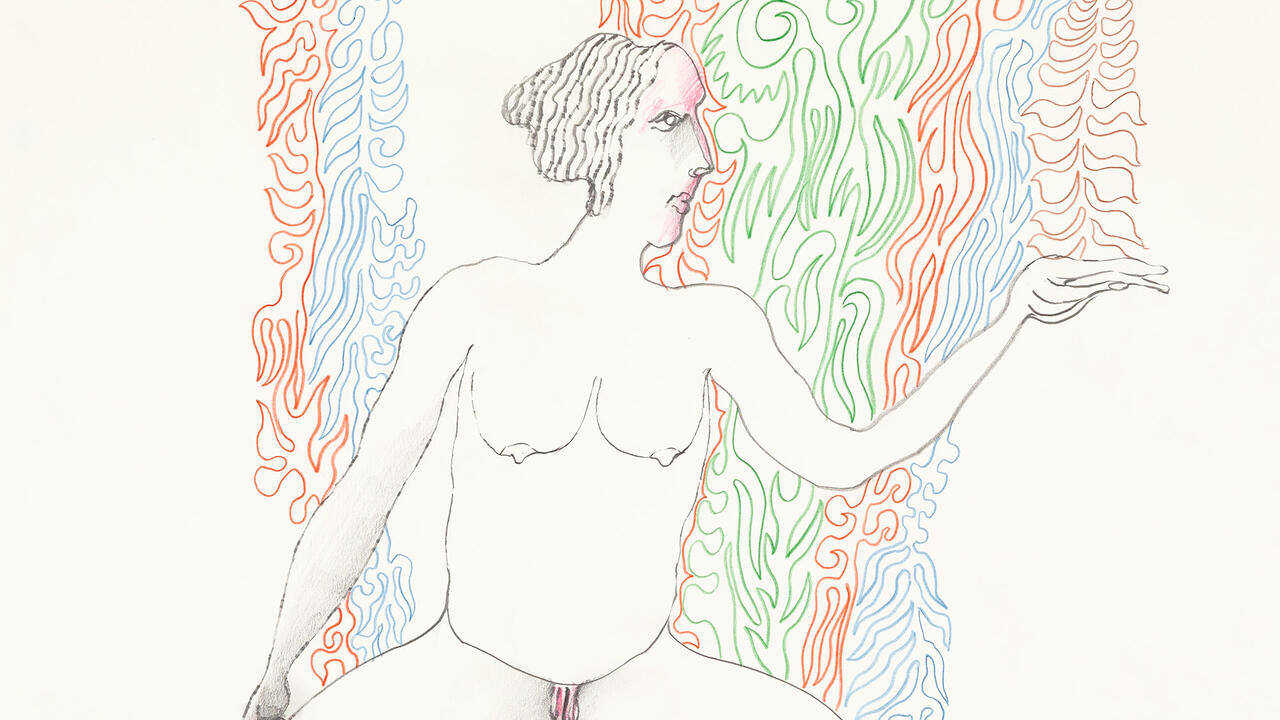2008
frieze asked 23 critics and curators from around the world to choose what they are looking forward to in 2008
frieze asked 23 critics and curators from around the world to choose what they are looking forward to in 2008
Iwona Blazwick
‘Revolutions: Forms That Turn’, Biennale of Sydney, 2008. Curator Carolyn Christov-Bakargiev takes the concept of revolution and opens it up to encompass politics, physics, aesthetics and metaphor. If Europe regards Australia as the upside-down continent, Christov-Bakargiev’s selection of around 100 local and international artists is set to reverse its antipodean status and make Sydney the destination for 2008.
Connie Butler
‘Solitaire’, organized by Helen Molesworth for the Wexner Center, Columbus, will include major bodies of work by Joan Semmel, Sylvia Plimack Mangold and Lee Lozano – all tough, all visually engaging, iconoclastic and solitary.
Richard Flood
I look forward to being a part of the new New Museum’s first year on the Bowery.
Gary Garrels
Great expectation falls on the Carnegie International. While a curator at the Walker Art Center Douglas Fogle organized a string of first-rate exhibitions that were thoughtful, fresh and artist-engaged. It would be amazing if he could give some insight into the current state of contemporary art.
Martin Herbert
A year blissfully bereft of 2007’s once-in-a-decade, stars-aligning, Grand Tour hype – and the predictable backlash, I look forward to the opening of London’s new Whitechapel Gallery and Cy Twombly at Tate Modern.
Matthew Higgs
Lawrence Weiner has never been the subject of a large-scale retrospective exhibition in the USA. Thus, one of the season’s most anticipated shows has been ‘As Far As The Eye Can See’, at the Whitney Museum. Jointly organized by the Whitney’s Donna De Salvo and Ann Goldstein (from the LA MOCA where the show will travel), the exhibition will present all aspects of Weiner’s mercurial practice, which in his words considers ‘the relationship of human beings to objects and objects to objects in relation to human beings’.
Chrissie Iles
‘Italics: Italian Art between Tradition and Revolution, 1968–2008’, curated by Francesco Bonami at the MCA Chicago and the Palazzo Grassi, Venice, will counter the tendency in Italy to curb individuality and experiment by tradition, and the artificiality of groupings and movements such as Arte Povera. I’m also looking forward to seeing the MACBA Barcelona exhibition ‘A Theatre Without Theatre’ at the Walker Art Center, a scholarly examination of the relationship between theatre and art from the early avant-garde movements in Russia to contemporary artists from Mike Kelley and Dan Graham to Michelangelo Pistoletto.
Udo Kittelmann
Forgive me for looking forward to a show at my own institution. The Museum of Modern Art in Frankfurt am Main plans to reopen debate on the work of the French painter Bernard Buffet who was once considered the most popular painter of the 1950s and ’60s but whose huge popularity was followed by an equally emphatic rejection.
Carol Yinghua Lu
As 2007 draws to a close, an air of excitement has descended on Beijing about the opening of the Ullens Center for Contemporary Art. The inaugural exhibition, ‘85 New Wave’, is yet another in a long line of recent attempts to re-examine the historical narrative of Chinese contemporary art.
Midori Matsui
Two directions indicated by successful exhibitions in 2007 open up the prospect for Japanese art’s self-searching, which I hope will continue in 2008, pushing forms of Conceptual art beyond the commercially-distributed, stereotypical framework of ‘Cool Japan’, on the one hand, whilst restoring ties with postwar Japanese avant-garde practices on the other.
Francis McKee
I’m looking forward to Liverpool in 2008. Being dubbed ‘city of culture’ can be a mixed blessing; so many official pressures for highlights that the word ‘culture’ can become bent out of shape. There are now enough people and organisations in the city, though, who will defend a more complex definition of contemporary culture. The Bluecoat’s reopening can only reinforce that too.
Joanna Mytkowska
My greatest hope for 2008 is the recently opened Avant-garde Institute (which I’ve co-founded) located in Edward Krasinski’s studio in Warsaw. It’s a museum in a block of flats, one that connects the history of the avant-garde and its social projects with the history of the residential housing block, the unwanted legacy of the Modernist Utopia, and the contemporary aspirations to social participation in art.
Hans Ulrich Obrist
I recently interviewed Nobel Prize Laureate Doris Lessing, who expressed her concerns, in relation to the art world, that the prioritization of material objects from the past may not be enough to convey their meaning to tomorrow’s generations. Lessing is worried that ‘our entire culture is extremely fragile’, and that the more dependent it becomes on complex devices, the more susceptible it is to collapse. She urges us to reconsider the capacity of our language and cultural systems to proffer knowledge to those outside of our immediate public. In the second half of 2008, I’m looking forward to the Gwangju Biennial and the Yokohama Triennale.
Sean O’Toole
The art market is a crude fuckfest even on the toenail of Africa. Things shaped like words, but devoid of the weight, meaning and impact of language, every day arrive fashioned like crude little bludgeons, beating one into submission. One hopes the year ahead will be different, the practice of substantiating art through writing challenged by other modes of saying and telling. I’m not quite sure how these dissident texts will assert themselves, but that is half the pleasure – watching out for African writers who deliver more than just cheerleading and ideology.
Adriano Pedrosa
I am curious about the Sydney and Sau Paulo biennials and Manifesta. I am also always looking forward to seeing projects I have been working on come to life – an exhibition of Juan Araujo at the Centro Gallego de Arte Contemporáneo in Santiago de Compostela, a residency project with Emily Jacir in Brazil, as well as books on the collection of Inhotim – Centro de Arte Contemporânea, Belo Horizonte, and on a collection of maps made by artists.
Mark Sladen
London’s Barbican will present the ‘Martian Museum of Terrestrial Art’. Since Martians are not familiar with our art, they have classified their findings according to a number of anthropological categories. For example, Tacita Dean’s 1997 work Trying to Find the Spiral Jetty is interpreted as a form of ancestor worship, while Piero Manzoni’s can of the artist’s shit is related to concepts of magic and transformation.
Trevor Smith
Like many of my colleagues, I have been critical of the New York Museum of Modern Art’s engagement with contemporary art. In 2007 exhibitions suffered from an excess of house style – too interested in defining masterpieces without providing the sinew and the surprise that keeps those great works alive. If they ever figure out how to bring some of the swing that has defined their project series into their larger presentations of contemporary art, things could change very quickly.
Polly Staple
In London, I’m looking forward to the forthcoming programme of Cubitt Gallery’s new curator Bart van der Heide and the continued programming by Joe Scotland at Studio Voltaire. I am also looking forward to Ryan Gander’s shows at Ikon, Birmingham, South London Gallery, Kunsthalle St Gallen and the Kunstverein Bonn; Mark Leckey at Le Consortium, Dijon and Cologne Kunstverein; and Cathy Wilkes at Milton Keynes Gallery. Adam Szymczyk and Elena Filipovic’s Berlin Biennial may suggest a fresh approach to exhibition-making. Okwui Enwezor’s Gwangju Biennale promises intellectual breadth and rigor. Also, I can’t wait to see Niki de Saint Phalle at Tate Liverpool – she’s great.
Eugenie Tsai
Trisha Brown will be the subject of a solo show organized by Peter Eleey at the Walker Art Center. The Whitney Biennial, a team
effort by Henriette Huldisch, Shamim Momin and Donna De Salvo, is always a must-see.
Jan Verwoert
I’m looking forward to more time spent alone and with friends on invoking micro-societies dedicated to the appreciation of art, ideas and other workable ways to live a good life.
Anton Vidokle
I see more and more evidence of artistic, discursive and organizational practices coalescing into a kind of an undifferentiated mode of art production. This phenomenon has as much to do with rethinking basic economic structures behind art practice as with rethinking the traditional categories of artistic roles and circulation of art. I look forward to seeing these tendencies being further articulated in the forthcoming year.
Kit Wise
‘Revolutions: Forms That Turn’, the 16th Biennale of Sydney, with Carolyn Christov-Bakargiev as Artistic Director, has announced it will be exploring ‘the impulse to revolt’. Further south, ‘Handle with Care’, the 2008 Adelaide Biennial of Australian Art, similarly promises to consider aspects of contemporary life that generate disquiet and debate. The Heide Museum of Modern Art’s show ‘Power and Beauty: Indigenous Art Now’ curated by Judith Ryan, Senior Curator, Indigenous Art, National Gallery of Victoria is likely to be a landmark event in the representation of indigenous art within Australia.
Catherine Wood
I am looking forward to Jérôme Bel’s dance retrospective at London’s Sadler’s Wells theatre – especially the live conversation between the watchable Bel and a Thai dancer, titled Pichet Klunchun & Myself, which through the simplest staging of speech and movement points to choreography as ideology while entertaining us with elegant gestures and slapstick humour. I am also looking forward to an exploration of the status of fetishized relics from performance works within the rituals of art viewing in ‘Ne pas jouer avec les mortes’ (Don’t Play with Dead Things), curated by Eric Mangion and Marie de Brugerolle for the Villa Arson in Nice. But nothing on the horizon is more enticing than the glittering promise of Marc Camille Chaimowicz’ opera set designs commissioned for productions of Maurice Ravel’s 1925 L’Enfant et les sortilèges and Béla Bartok’s Bluebeard’s Castle (1911) at the Teatro di San Carlo in Naples in March.

















